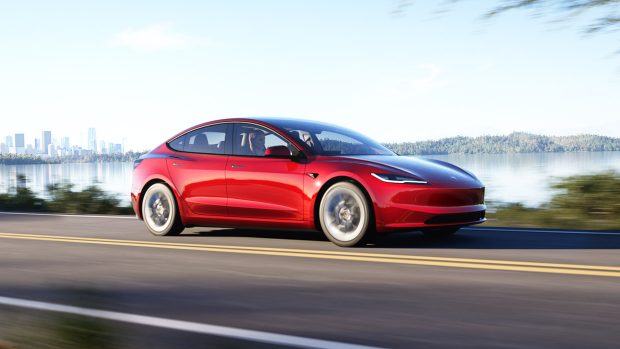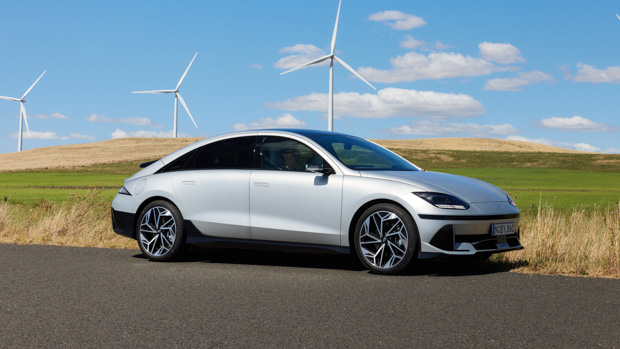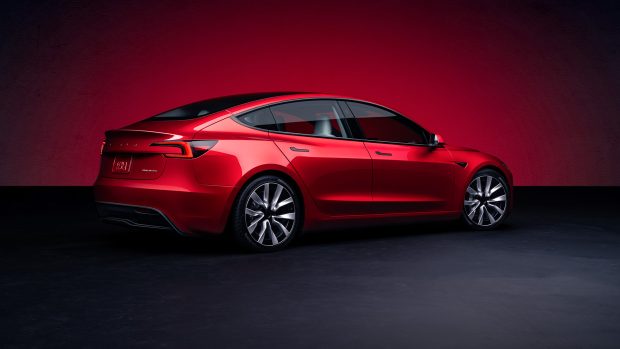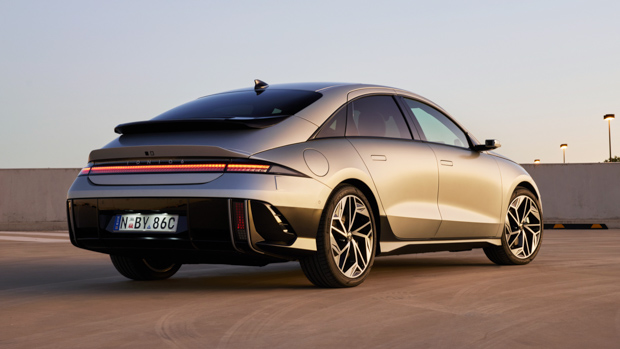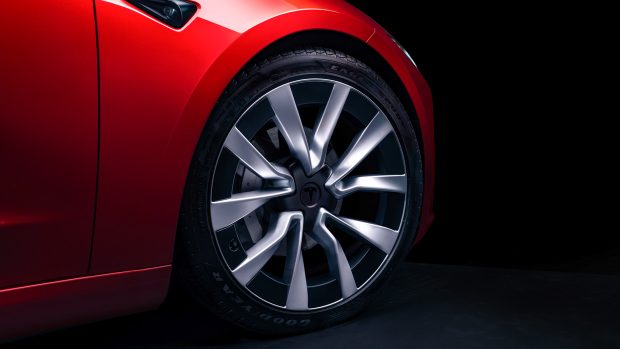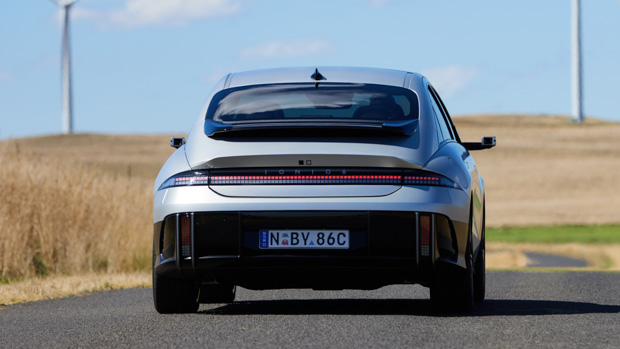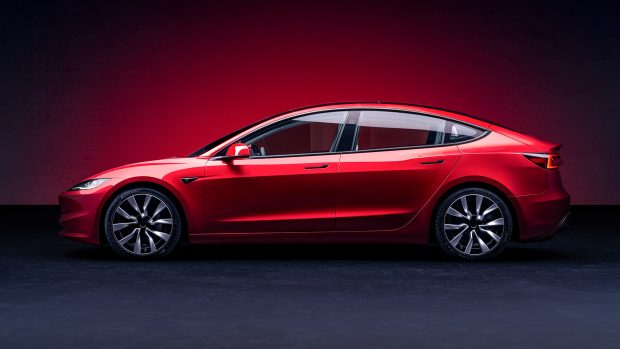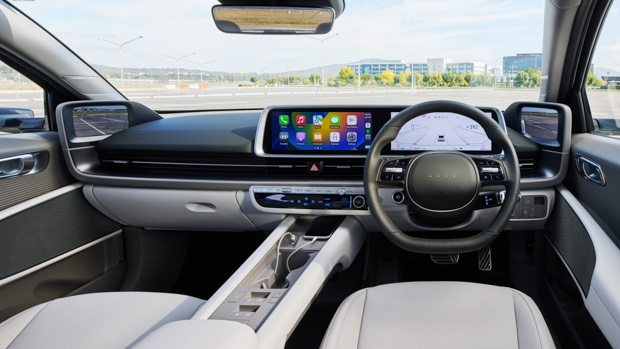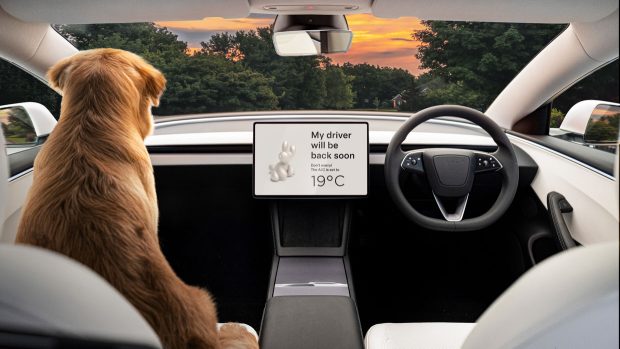-
Car Reviews
- Car News
-
Car Comparisons
Latest comparisons
- Chasing Deals
The big-selling Tesla Model 3 goes head-to-head with Hyundai’s Ioniq 6 sedan in the latest Chasing Cars battle of the spec lists
Tesla has sold an impressive 15,718 Model 3s so far in 2023, which has been a significant amount more than the 468 Ioniq 6s that Hyundai sold in the same timeframe.
But the good news is that Hyundai is very confident that supply is improving, so could we see bigger numbers from the Ioniq 6 in 2024?
The Tesla Model 3 has been updated, and now so has the Ioniq 6, so where do both of these models stand in 2024?
It’s that time again as we sit down and see how these two electric models compare back to back on the spec sheet.
Let’s dig in and find out the similarities and differences.
Note: Chasing Cars spec battles are only spec sheet comparisons. Both of the vehicles in this spec battle are yet to be extensively reviewed and tested by CC.
It’s worth noting that both of these EVs have dropped in price quite significantly since our last spec battle that featured these two opponents.
Starting with the Tesla Model 3, pricing starts at $61,900 before on-road costs for the base rear-drive model, but tops out at $71,900 before on-road costs for the current flagship, the Model 3 Long Range dual-motor.
Meanwhile, the Hyundai Ioniq 6 has just seen a significant $8500 price drop, with the electric model now starting from $65,500 before on-road costs for the base, eponymous ‘Ioniq 6’.
Pricing for the Ioniq 6 tops out at $85,500 before on-road costs for the Epiq all-wheel-drive variant.
Standard equipment on the Tesla Model 3 for 2024 include:
As for the Hyundai Ioniq 6, the model comes well specced with the following features:
Tesla Model 3
The 2024 Tesla Model 3 is powered by either a 57.5kWh usable battery pack, or a larger 75kWh usable pack in Long Range guise.
Tesla is a little quiet about its power and torque outputs, however its Model 3, in base spec, uses a 208kW/420Nm rear mounted electric motor. The vehicle is able to accelerate to 100km/h in a claimed 6.1 seconds.
The Long Range dual motor, meanwhile, produces greater outputs of 366kW/493Nm from two electric motors, one on the front axle and one on the rear. This dual motor variant is capable of sprinting to 100km/h in a claimed 4.4 seconds.
What about charging?
The rear-drive Model 3 is capable of charging at up to 11kW AC and up to 170kW DC using fast charging. The same situation goes for the dual-motor variant.
Hyundai Ioniq 6
The updated 2024 Ioniq 6 now comes with a smaller 53kWh battery pack as standard, but can be optioned with a long-range 77.4kWh battery pack. The mid-tier Dynamiq and flagship Epiq grade also gain this 77.4kWh battery pack.
The Hyundai Ioniq 6 comes in a range of powertrain options, including rear- or all-wheel-drive configurations.
The base Ioniq 6, which has been recently announced, uses a 111kW/350Nm electric motor that powers the rear wheels.
A more powerful 168kW/350Nm rear-drive electric motor is also available. The dual-motor all-wheel drive is powered by a 74kW motor up front and a 165kW motor at the back, producing total system outputs of 239kW/605Nm.
What about charging?
The Ioniq 6 can charge at speeds of 11kW AC, or up to 170kW DC for the single motor variants, or up to 233kW DC with the dual-motor variants.
Tesla states that the 2024 Model 3 will be able to travel a claimed 513km (WLTP) in rear-drive guise, or up to a claimed 629km (WLTP) for the Long Range dual-motor.
The Ioniq 6, meanwhile, has a claimed range of 429km (WLTP) in standard 53kWh guise, 614km (WLTP) in extended-range rear-drive guise and 519km (WLTP) in dual-motor flagship spec.
The Tesla Model 3 comes standard with the following basic Autopilot safety features:
An enhanced Autopilot package can be purchased for $5100 and includes:
The Hyundai Ioniq 6 is fitted with the following features as standard:
The Tesla Model 3 and Hyundai Ioniq 6 for 2024 both provide plenty of appeal for the Australian new car buyer.
While the Tesla is a little cheaper than the Ioniq 6, the Hyundai makes up for the entry price difference with an extensive standard array of features and safety gear.
And while the Tesla Model 3 has more power and torque and arguably more range, on the spec sheet alone, the Ioniq 6 looks to be a real winner in several areas.
Of course, this is simply a spec battle comparison, and we’ll be looking to do a comparison of both these 2024 models early next year.
Stay tuned!
Latest news
About Chasing cars
Chasing Cars reviews are 100% independent.
Because we are powered by Budget Direct Insurance, we don’t receive advertising or sales revenue from car manufacturers.
We’re truly independent – giving you Australia’s best car reviews.
